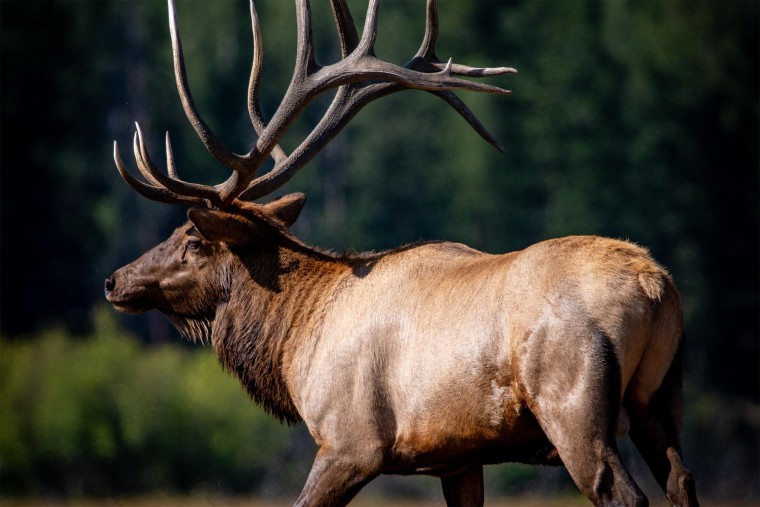A bull elk with magnificent antlers that was a favorite of photographers and visitors to Rocky Mountain National Park has died, according to the National Park Service.
Known as “Bruno,” “Kahuna” and “Incredibull,” the Colorado animal was estimated to be over 10 years old.
“His cause of death is unknown,” according to Kyle Patterson of the National Park Service.
“He could have died from natural causes or been preyed on by a mountain lion," Patterson said. "He got hurt during the rut this past year from another bull.”
She said the Park Service is keeping the location of the elk’s carcass a secret.
‘The public should always be cautious around carcasses (elk, deer, moose, bighorn sheep) in Rocky Mountain National Park, because mountain lions could be nearby,” she said.
Loren Schrag and Alli Schrag, who run the Good Bull Outdoors page and have photographed the elk over the years, said they came across Bruno's carcass after it had been eaten. Mountain lion tracks were found in the area, they said.
The Schrags said Bruno had a distinctive antler configuration.
Usually bull elks have small third tines, "but he happened to have a relatively large third tine," Loren Schrag said.
The life cycle of bull elk's antlers begin with a single tine on each side, and then by its second or third year it will have three or four tines — known then as a "raghorn," the Schrags said.
They're mature when they have six tine points or greater, they said.
"For him, his peak maturity was in 2019, and for the last two years he regressed," Loren Schrag said, and his antlers shrunk.
He announced Bruno’s death in a Facebook post dedicated to the elk Sunday.
“Being the first to place a hand on his magnificent antler (one had already been shed) was humbling and all three of us — myself, Alli and Andrew — were each blessed to be the last to see him alive and the first to see him passed on,” the post said.

